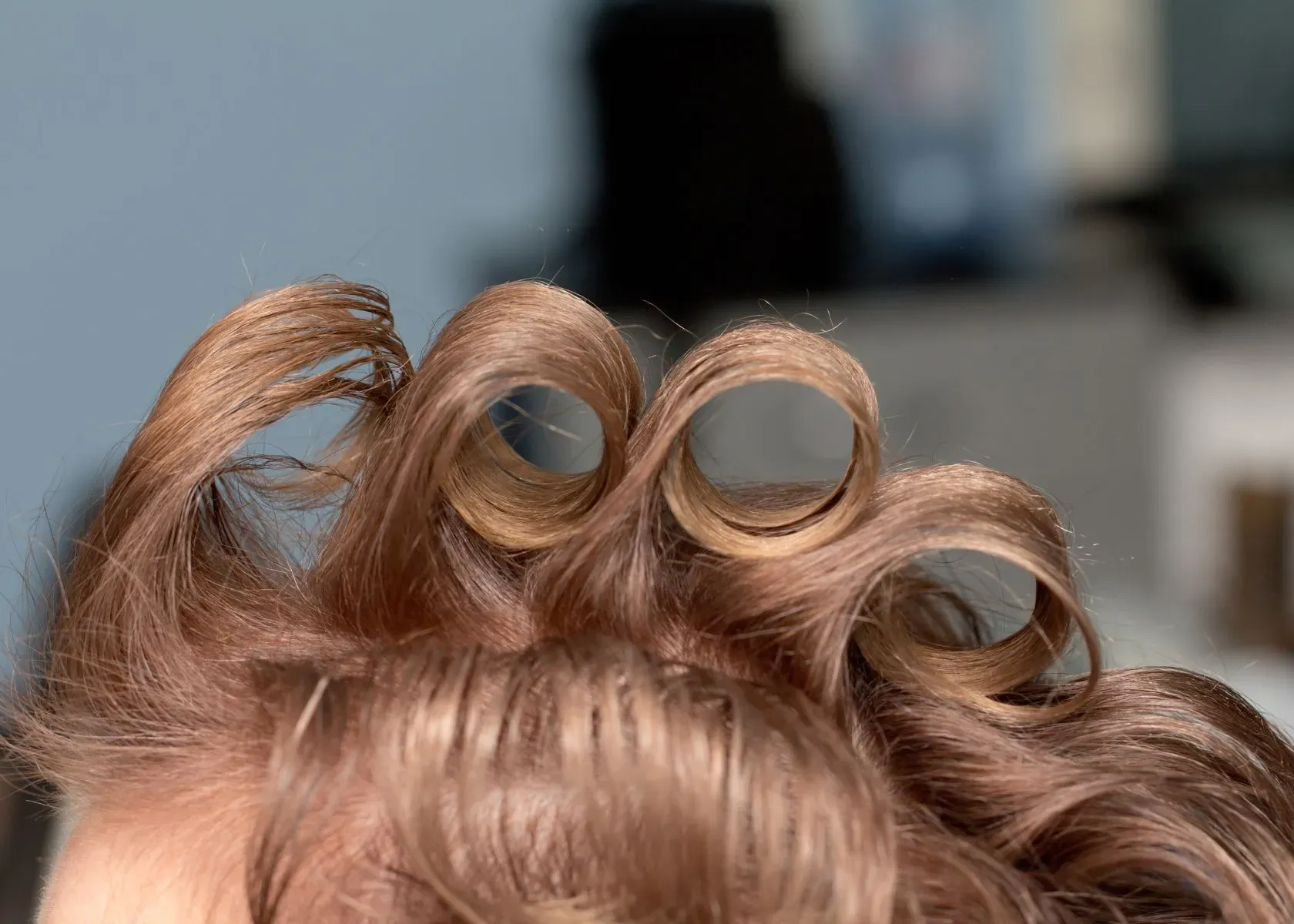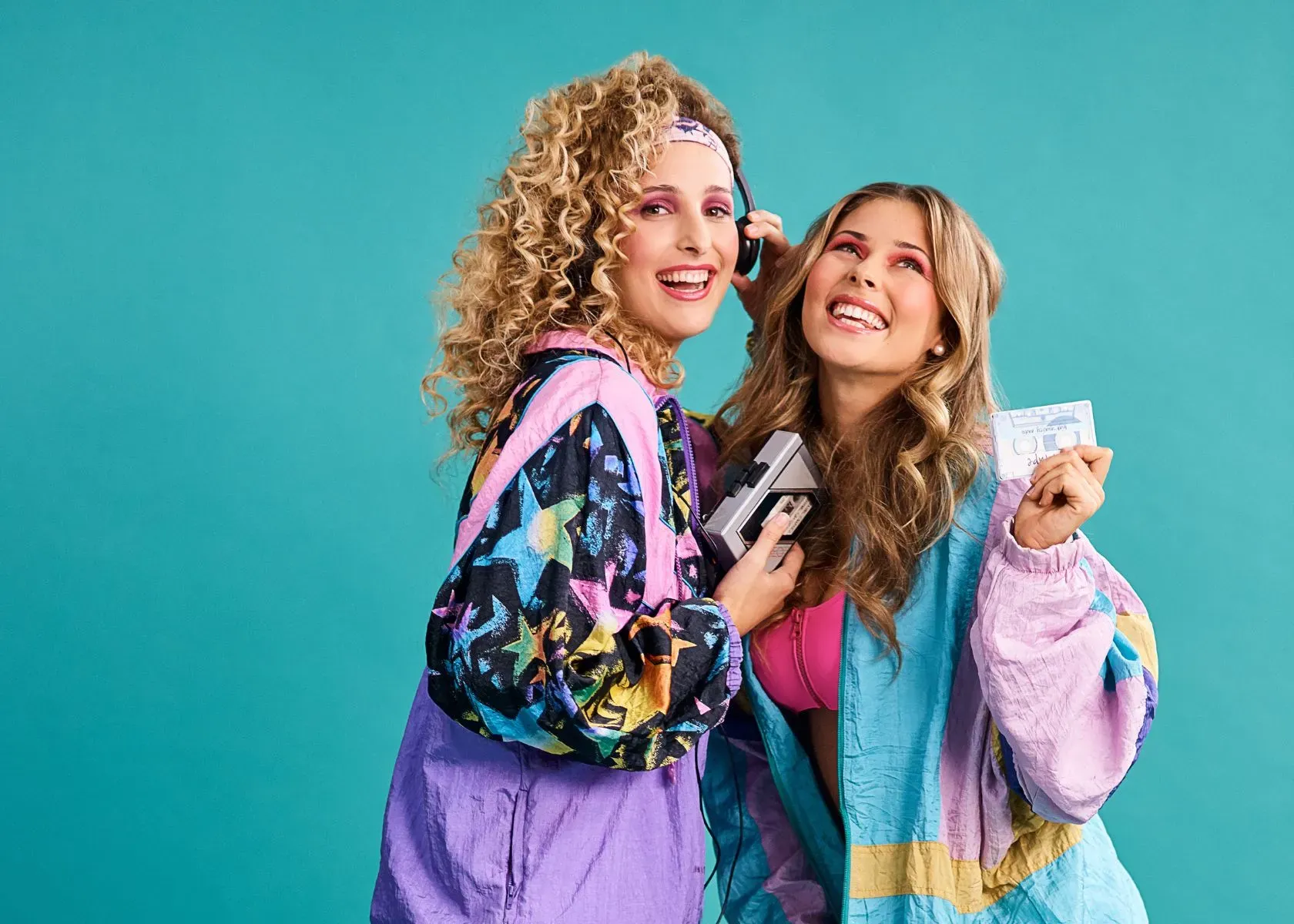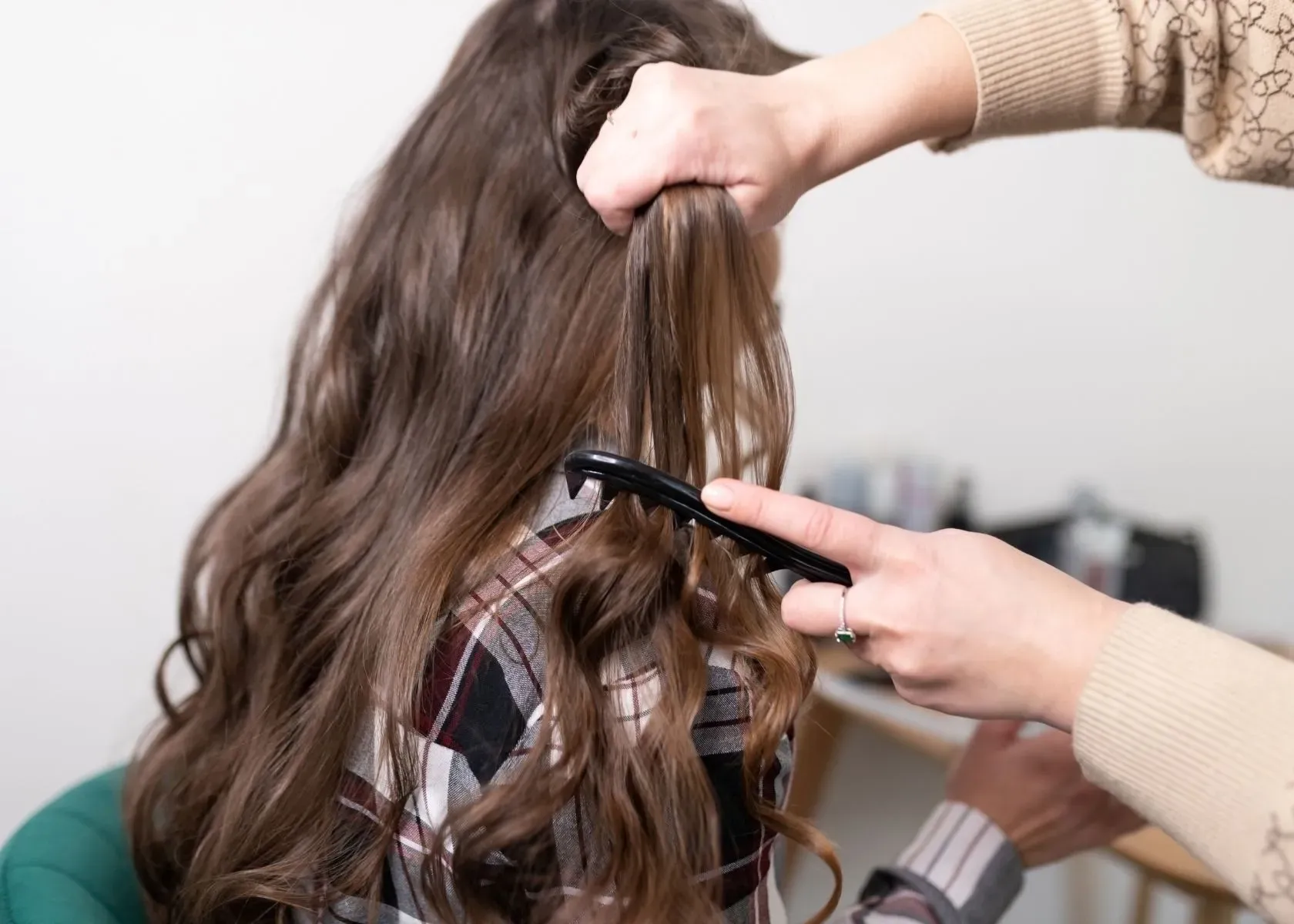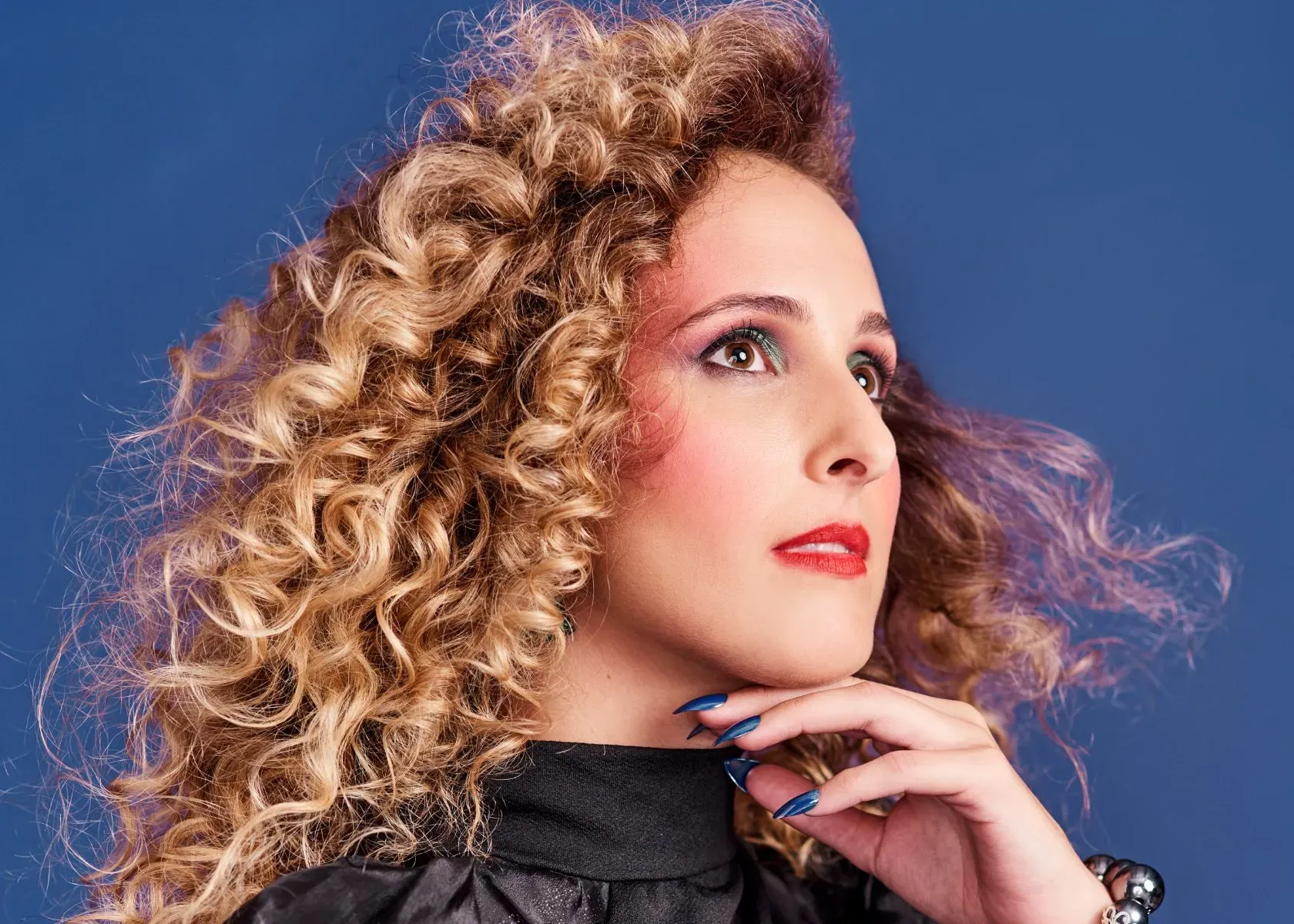Hair perms, a way to create curls or waves in your hair, are making a big comeback in 2023. Everyone's talking about them. But here comes the tricky part: if your hair is bleached, you might have heard that perming could be risky and could even damage your hair for good.
Companies that make these products and salons have been trying really hard to find ways to safely perm bleached hair. There are a lot of careful steps you need to take if you want those curls without hurting your hair.
Perms come in different types like digital, hot, or cold perms - each one gives you a different look. If you're thinking of getting perm-dyed hair on your already-lightened locks, it’s super important to prepare your hair properly and use the right stuff beforehand.
After all this effort, taking care of your new curly hair is key; there are special tips just for stylizing permed hair strands.
While curling up color-treated strands isn’t the best idea because they’re more breakable, we've got answers lined up for all the burning questions about this process.
Transforming straight strands into bouncy curls can be exciting, but remember – safety first! Keep reading to uncover how to achieve beautiful results while keeping those treated tresses happy and healthy.
Get ready for some serious perm solution for your bleached or natural hair texture.
- Perming bleached hair carries risks such as breakage and dryness, so it's critical to have healthy hair and consult a professional beforehand.
- Choose the right type of perm for your hair condition; digital or hot perms involve heat, while cold perms don't, but both can damage vulnerable strands.
- Before perming, prepare by deep conditioning, avoiding heat styling tools and chemical treatments, and consider an Olaplex treatment for protection.
- Aftercare is crucial: use sulfate-free products designed for treated hair and minimize heat styling to maintain the health of your curls.
- Regular trims, protective treatments like Olaplex, deep conditioning masks weekly, and gentle handling can help keep permed, bleached hair in good shape.
Can You Perm Bleached Hair?

Perming dyed or bleached hair can be risky and may cause further damage if not done properly. Understanding the risks and meeting certain criteria for safe perming is essential.
Understanding the Risks of Perming Bleached Hair
Bleaching your hair can be tough on your strands, stripping away natural oils and making them more fragile. When you perm bleached hair, you're adding yet another chemical process on top of already stressed locks.
This double dose of chemicals can lead to severe damage, such as breakage, excessive dryness, and loss of elasticity. Hair that's lost its strength doesn't just look unhealthy—it is weaker and more prone to snapping off.
If you decide to take the risk of perming your colored or bleached hair, it’s crucial to assess the condition first. Hair that has been bleached multiple times or feels like straw when touched might not withstand the perming solution well.
Additionally, applying heat during a perm can intensify harm done by previous bleaching sessions. The outcome could range from unsatisfactory curl formation to extreme dryness or brittle strands that fall apart under slight tension.
Experts often suggest waiting for a period after bleaching hair color before considering a perm—to allow time for recovery—if at all possible. Safe perming requires healthy hair as a starting point; without it, achieving those dreamy curls could turn into a nightmare for your tresses.
Before making any decisions, seek advice from professional stylists who understand how different treatments interact with various hair types and conditions.
Meeting Criteria for Safe Perming
Understanding the risks of perming bleached or chemically treated hair is essential, but meeting the criteria for safe perming is equally important. Here's how to ensure a safe perm for bleached hair:
- Consult a Professional: Seek advice from a reputable hairstylist experienced in perming bleached hair to minimize potential damage.
- Assess Hair Condition: Ensure that your hair is in good condition, with minimal dryness or damage, before considering a perm.
- Patch Test: Conduct a patch test on a small section of bleached hair to assess its reaction to the perming chemicals.
- Follow Manufacturer's Guidelines: Adhere strictly to the guidelines provided by the perm product manufacturer for optimal results.
- Use Protective Treatments: Apply Olaplex or other protective treatments specifically formulated for bleached hair before and during the perming process.
- Consider Hair Type: Understand that different hair types, including black hair, may require unique considerations when perming after bleaching.
- Evaluate Styling Regimen: Adjust your styling routine to minimize heat exposure and avoid excessive chemical treatments on permed and bleached hair.
- Monitor Hair Health: Regularly assess the health of your permed and bleached locks and adjust your care routine accordingly.
Types of Perms

When considering perming bleached hair, it's important to understand the different types of perms available, such as digital or hot perms and cold perms. Each type offers unique benefits and considerations for chemically treated hair.
Digital or Hot Perm
When considering perming bleached hair, it's crucial to understand the types of perms available. One popular option is the digital or hot perm. This technique involves using a machine that digitally regulates the temperature and processing time, allowing for more precise control over the curl pattern and producing long-lasting results.
However, it's important to note that this method may not be suitable for all hair types, especially those that have been chemically treated or damaged.
Hot perms can provide consistent and uniform curls, but they also require careful assessment of the hair's condition before proceeding. The heat involved in this process can cause additional stress on already compromised strands, so it's essential to consult with a professional stylist who can evaluate your specific situation and recommend the most appropriate treatment for your bleached hair.
Cold Perm
Transitioning from the Digital or Hot Perm, a cold perm is another method for creating curls in the thin hair. This technique uses a solution that doesn't require heat to activate and set the curl.
The cold perm involves wrapping the hair around large rods and applying a waving lotion to create loose, natural-looking waves or defined curls.
During a cold perm process, it's essential to consider your hair type and condition since perming chemically treated or damaged hair can lead to irreversible damage.
While some may be interested in giving their bleached hair more texture with a cold perm, it's crucial to consult with a professional hairstylist who has experience working with chemically treated hair treatment.
Before Getting a Perm on Bleached Hair

Before getting a perm, it's important to prepare your hair by using recommended products and ensuring that it is in good condition. Proper preparation can help minimize potential damage and achieve better results after perming.
Preparing Hair for Perming
To prepare the hair for perming, it is crucial to start with healthy, well-moisturized hair. Here are some essential steps to follow:
- Deep Conditioning: Prior to perming, ensure your hair has been deeply conditioned using a high-quality product recommended for chemically treated hair.
- Assess Hair Condition: Check for any signs of damage or dryness in the hair before proceeding with the perm. It's crucial to have a professional stylist assess the condition of your hair to determine its suitability for perming.
- Avoiding Heat Styling: Refrain from using heat styling tools for at least a week before the perm appointment, as excessive heat can dehydrate and weaken bleached hair.
- Minimize Chemical Treatments: To avoid further damage to bleached hair, avoid additional chemical treatments such as coloring or highlighting in the weeks leading up to the multi-textured perm.
- Consultation with a Professional: Schedule a consultation with an experienced stylist who specializes in perming chemically treated hair. This will enable you to discuss any concerns and receive personalized advice regarding your specific hair type and condition.
- Olaplex Treatment: Consider incorporating Olaplex treatments into your pre-perm routine to strengthen and protect the bonds of bleached hair before undergoing the perming process.
- Pre-Perm Test: Before committing to a full perm treatment, consider requesting a strand test where a small section of your bleached hair is exposed to the perming solution to assess its compatibility and potential reaction.
- Clarify Hair Products: Use a clarifying shampoo that effectively removes buildup from styling products and conditioning agents prior to getting a perm - this will allow for better penetration of the perming solution.
- Trim Split Ends: If necessary, trim any visible split ends before getting a perm, as this will help prevent further damage and promote healthier-looking curls post-perm.
Recommended Products to Use
To care for permed, bleached hair, it's crucial to use gentle sulfate-free shampoos and conditioners. These products help maintain the health and texture of your hair.
- Look for leave-in conditioners with keratin or amino acid complexes to strengthen and hydrate permed, bleached hair. You can also use a perm lotion on your color-treated hair to prevent your hair shaft or hair structure from damage.
- Use a deep conditioning mask once a week to nourish and repair chemically treated hair.
- Consider using Olaplex treatments to restore the bonds in damaged, bleached hair without compromising the perm.
- Apply heat protectant sprays before using hot styling tools to prevent further damage to permed, bleached hair.
- Invest in a quality anti-frizz serum or oil to maintain smoothness and shine in permed, bleached hair.
Aftercare of Getting a Perm

Once you've gotten a perm on your bleached hair, it's important to continue caring for your new curls. This includes using specific products to maintain the health and texture of your permed hair, as well as styling tips to enhance the look of your curls.
Caring for Permed Hair
To care for permed hair:
- Use a sulfate-free shampoo and conditioner to maintain the integrity of the perm and prevent premature fading.
- Consider deep conditioning treatments tailored for chemically treated hair to keep your curls hydrated and healthy.
- Avoid heat styling whenever possible, as excessive heat can cause damage to permed hair.
- Gently towel dry your hair after washing instead of rubbing vigorously to prevent unnecessary frizzing.
- It's important to trim your ends regularly to remove any split or damaged ends that may affect the overall appearance of your perm.
- Opt for a wide-tooth comb or a specialized brush for curly hair when detangling to avoid breakage and preserve your curls' shape.
- Protect your hair from environmental stressors by using a UV-protectant spray before going out in the sun.
- Embrace air-drying to maintain the natural bounce and texture of your perm without subjecting it to additional heat damage.
Styling Tips
To style permed, bleached hair, use a wide-tooth comb to gently detangle the hair and avoid breakage. Opt for heat-free styling methods such as air-drying, braiding, or twisting to maintain the perm's shape and prevent additional damage from heat tools.
Apply a lightweight leave-in conditioner to keep the curls hydrated and frizz-free without weighing them down. When using heat styling tools, apply a heat protectant spray to shield the hair from potential damage caused by high temperatures.
Experiment with different hairstyles, such as loose waves or voluminous curls, to showcase the versatility of permed hair.
Maintain your permed, bleached hair by scheduling regular trims every 6-8 weeks to remove any split ends and promote healthy growth. Consider using sulfate-free shampoos and conditioners formulated for chemically treated hair to preserve the perm's texture and minimize color fading.
FAQs on Perming Bleached Hair
To perm bleached hair, it's crucial to understand the potential risks and necessary precautions beforehand. Here are some frequently asked questions about perming bleached hair:
Can you get a perm if your hair is bleached?
Yes, you can perm bleached hair, but it's important to do it safely to avoid damaging your hair further.
What should I do before perming my bleached hair?
Before perming, treat and condition your hair with products like Olaplex to strengthen it and reduce the risk of damage.
How can I care for my permed and bleached hair?
To take care of permed and colored hair, use gentle shampoo and deep conditioning treatments regularly, and avoid heat styling to manage chemically treated hair without causing more harm.
Will a perm change the texture of my bleached hair?
Perming will alter your bleached hair's texture by curling it while also having effects on its health, so ensure proper maintenance after treatment.
Is there a way to style permed and bleached hair without causing more damage?
When styling permed and color-treated locks, opt for non-heating methods or use heat protectant sprays if you must apply heat in order to minimize potential harm from styling.
Conclusion
Perming bleached hair requires careful consideration and caution. The potential for permanent damage to the hair must be acknowledged. It is essential to adhere to recommended products and procedures when perming treated or damaged hair.
Emphasizing the importance of understanding the risks involved in perming on bleached hair is crucial. This article aims to provide practical tips for safe and effective perming, ensuring that readers can implement these strategies with confidence.
By following these guidelines, one can maintain healthy, styled hair without compromising its integrity. For further information or guidance on effectively managing chemically treated hair, consult a professional hairstylist or trusted resources on maintaining perm after bleaching.
Feel free to share your experience of perming your bleached hair with all of us in the comments section below.
References
- Frontiers in Medicine. (2023). Mechanisms of impairment in hair and scalp induced by hair dyeing and perming and potential interventions.
- PubMed. (2023). Dissimilar effect of perming and bleaching treatments on cuticles: advanced hair damage model based on elution and oxidation of S100A3 protein.
Read More About Perms and Bleaching Hair






